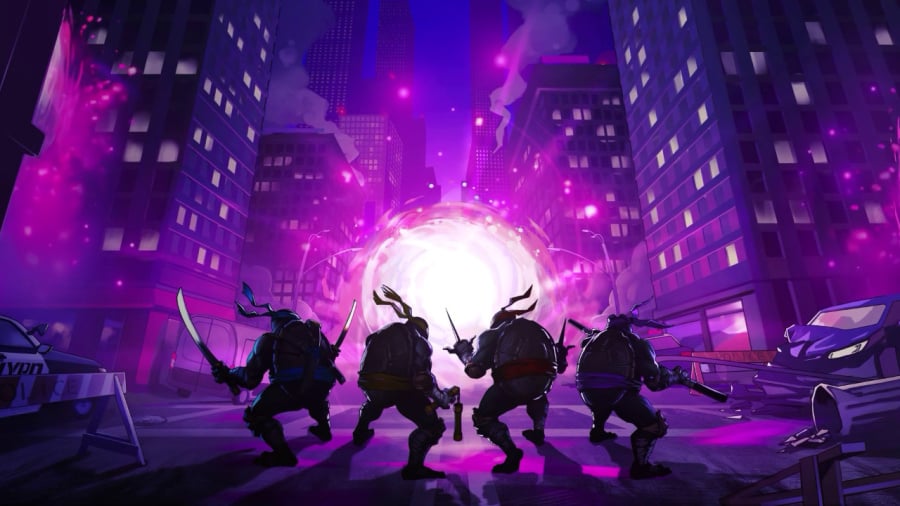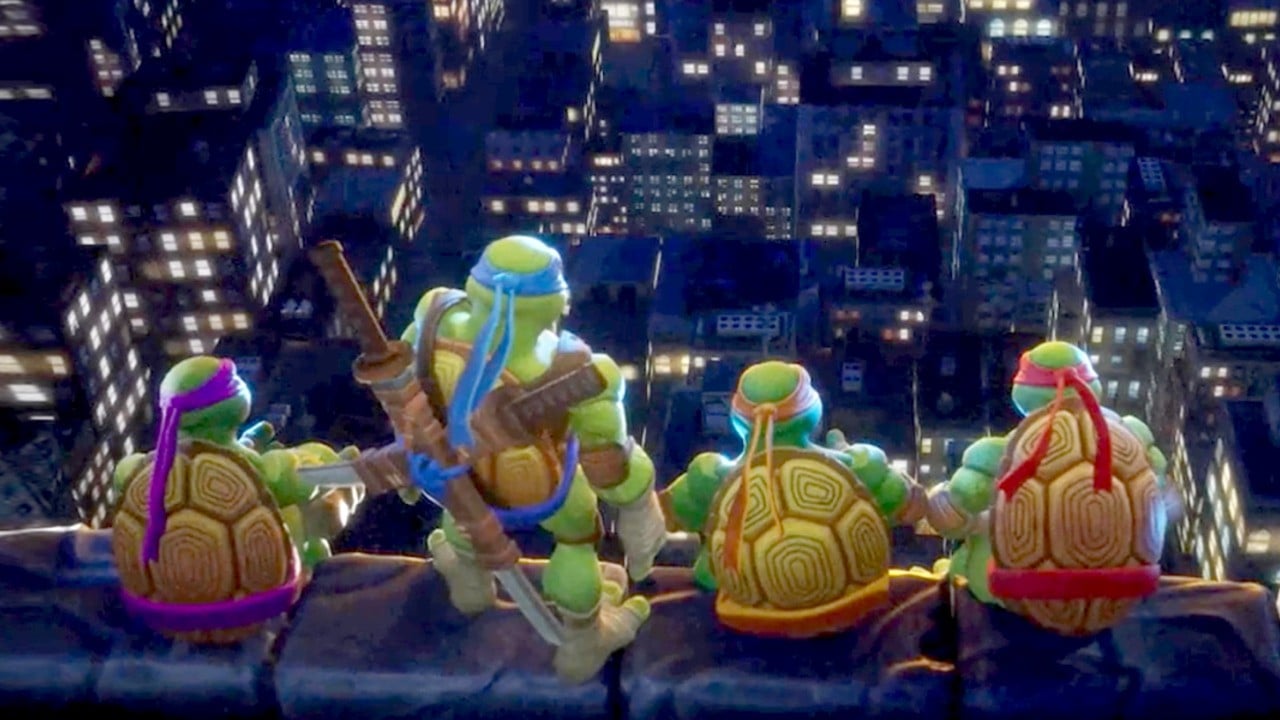From the outside, Teenage Mutant Ninja Turtles: Splintered Fate looks a lot like Hades. The room-based gameplay, upgrade and power-up systems, approach to storytelling, and hack-and-slash combat will be no strangers to those who’ve played the award-winning godlike roguelike. But that’s no bad thing. Imitation is, after all, the sincerest form of flattery, and Splintered Fate is throwing it out there like shuriken in this run-based escapade from the underworld sewers.
The comparisons to Supergiant’s critical darling are a double-edged sword, though. On the one hand, Splintered Fate is is Hades, and anyone who enjoyed avoiding the wrath of the God of the Underworld, will find this to be a lot of fun; on the other hand, this is is not Hades and the inevitable comparisons the game draws with its combat, performance, and graphics are perhaps the biggest disappointment.

Splintered Fate arrived in a new guise (or its turtle equivalent) on Apple Arcade in May 2023. Super Evil Megacorp’s roguelike launched on the mobile gaming service without much fanfare, but didn’t quite catch on in the way we’ve come to expect from heroes in a half-shell. Its platform exclusivity ensured it stayed that way for the next 12 months.
Now on Switch, it feels like the game has finally found its home. This is the same run-based roguelike you find on mobile, but with a few extra bells and whistles, like refreshed visuals, new controls, and a much-requested four-player couch co-op mode that make the Switch port that little bit more appealing. These new features are all welcome additions, but they all rely on the strength of the base game. Fortunately, Splintered Fate is actually pretty good.
Master Splinter has been kidnapped (shock, horror!) and it’s up to Leo, Raph, Donnie, and Mikey to get him back. To do so, the brothers must battle their way out of the sewers and onto the rooftops, taking out rooms full of fiendish Foot Soldiers and evil MOUSERs along the way, grabbing ability-altering power-ups along the way. Once defeated, you’re returned to the underground lair where you can cash in your collectibles to level up before trying again.

As both a TMNT story and a roguelike, there’s nothing particularly special about it, but it all works the same. Each Turtle has a unique set of abilities, and you’re encouraged to try them all if you want to unlock certain higher-level upgrades. These power-ups can make or break a run, with a decent variety of effects that benefit those open to switching up their combat techniques. And, most importantly, it’s a far more accessible way to use roguelikes than many of its contemporaries, with a selectable ‘Easy Mode’ available from the pause menu that can be toggled on or off at any point during a run.
Both the online and local co-op options make Splintered Fate stand out enough from the roguelike crowd that it doesn’t whole a copy-paste overview of the genre’s best pieces. Roguelikes can often be a tough nut to crack, with a dense upgrade system and an intimidating difficulty curve, and while Splintered Fate definitely delivers on its upgrades and level of challenge, the option to have a friend lend a helping hand is welcome, particularly in later, hostile encounters.
And boy, do these encounters get busy. The visual style does its job (it’s a little mobile-y, but let’s not forget its roots here), but it can sometimes be hard to keep track of your Turtle. Frequently, waves of mutants and ninjas flood the screen, overwhelming them with unique attack animations; a few quick dashes help separate the crowd, but at certain points the sheer number of enemies serves as a quick reminder that co-op is the way to go.

Solo, it’s tough. You’re under-leveled at the start, and the game wants you to know it. You’re going to die a lot, but lively voice acting (including Yuri Lowenthal as Michelangelo) and an original story from TMNT legend Tom Waltz kept us coming back for more – even if some of the dialogue encounters dragged on a bit longer than we’d have liked. Again, difficulty modifiers are there to make things a bit easier/harder, but the base game already offers a healthy level of challenge.
After our initial successful run, additional challenges helped to spice up the gameplay, so even with a fair few character upgrades under our belt, things still felt relatively fresh. The dialogue and story systems aren’t as reactive as Hades , and we found ourselves reciting lines long before the characters had a chance to say them, but random mini-boss encounters, changing attack patterns, and fluctuating enemy density mean runs can still feel unique even if you stick with a similar build each time.
We still had fun on our repeat playthroughs, and were happy to see things gradually open up, but once we got the hang of things, some of Splintered Fates’ flaws started to creep to the surface. Combat is fluid enough, but the Turtles’ arsenal of Attack, Special, and Tool means that most encounters become button-mashing in a way that the best hack-and-slashers tend to avoid. Enemy attacks are predicted by a visible “damage zone” while they’re powering up, so defeating them requires you to get out of the way and spam “Y” until a better option becomes available.

This isn’t helped by the game’s shaky performance on Switch. Splintered Fate is fairly stable during busy screens, but the framerate frequently drops when multiple enemies appear on-screen, or during sequences involving large, detailed backgrounds. We also experienced a handful of hard crashes while performing simple tasks like visiting the in-game shop. Thankfully, an auto-save function meant we could restart and jump straight back into our run without any hiccups, but it does little to help with the room-to-room flow. There is a ‘Cinematic Mode’ setting which caps the framerate at 30fps to “increase image quality”, though we found the visual improvements to be negligible and actually preferred the higher, albeit shaky, framerate.
These issues don’t overshadow what is a perfectly enjoyable and accessible roguelike, but they do serve to underscore how this formula has been better in the past. The debt to Hades is too great to ignore, and while the performance glitches and repetitive dialogue scenarios are frustrating in their own right, they’re made all the more apparent by a constant reminder that this radical roguelike is not the award-winning odyssey it purports to be.
Conclusion
With a gameplay loop that effortlessly integrates its half-shelled heroes into the roguelike world, Teenage Mutant Ninja Turtles: Splintered Fate is a fun and accessible ‘Hades-esque’ game that’s best enjoyed with friends. Despite the strength of the IP and the addition of co-op, it’s not quite strong enough to avoid unfavourable comparisons to Supergiant’s classic, and constantly feels like it’s on the backfoot because of it. There’s fun to be had here, but those who’ve spent time in the Underworld will find it hard to shake the feeling that this central loop has been done much better elsewhere.
